#Bioorthogonal
Explore tagged Tumblr posts
Text
Unnatural Amino Acids: Beyond the Basics - Unlocking New Research Frontiers
Unnatural amino acids are revolutionizing research and bioengineering. Explore their applications in protein engineering, biomaterial design, and drug discovery. Discover the top players in the market and the exciting future of unnatural amino acids
The Unnatural Amino Acids Market: Pushing Boundaries in Bioengineering The unnatural amino acids market is a rapidly evolving field with vast potential in various scientific and technological applications. Unnatural amino acids are molecules structurally similar to the 20 naturally occurring amino acids that form the building blocks of proteins. However, unnatural amino acids possess unique…

View On WordPress
#Bioengineering#Biomaterials#Bioorthogonal#Biotechnology#DrugDiscovery#FutureOfScience#NextGenMaterials#ProteinEngineering#ScientificResearch#UnnaturalAminoAcids
0 notes
Text
Things women created and discovered!
All men
Francium (elemental)
Torpedoe radio guidance/navigation systems
Dishwasher
GPS
Wi-fi
Structure of the Milky Way
Kevlar
The Earth's inner core
Aciclovir - an antiviral drug used for the treatment of herpes simplex virus infections, chickenpox, and shingles
Azathioprine - an Immunosuppressive drug used in rheumatoid arthritis, Crohn's disease, ulcerative colitis, and in kidney transplants to prevent rejection
Flossie Wong-Staal was the first scientist to clone HIV and map its genes.
Pyrimethamine was initially developed by Nobel Prize winning scientist Gertrude Elion as a treatment for malaria.
Disposable diapers
Child carriers
Vaccine for whooping cough
The galaxy rotation problem - important to the discovery of dark matter
Radio astronomy - Type I and Type III solar radio bursts
That stars are primarily composed of hydrogen and helium
The new outer arm of the Milky Way - In 2004, astrophysicist and radio astronomer Naomi McClure-Griffiths identified a new spiral arm of the Milky Way galaxy
Radiation
Radon (elemental)
Kinetic energy
Heavy elements in cosmic radiation
Beta particles are electrons
Nuclear shell
Astatine (elemental)
Nuclear fission - helped in the creation of nuclear weapons
Rhenium (elemental)
Seaborgium (elemental)
Polonium and radium (elemental)
Scotchgard
Structure of vitamin B12
Carbon Dioxide
Bioorthogonal chemistry - the concept of the bioorthogonal reaction has enabled the study of biomolecules such as glycans, proteins, and lipids.
Central heating
Square-bottomed paper bag
Correction fluid (white-out)
House solar heating
Wrinkle-free fiber
Windshield wipers
Car heater
Airplane mufflers
Underwater telescopes for warships
Written computer program
Written (programming) language
Chocolate chip cookies
Pizza saver
Mint chocolate chip ice cream
DNA structure
Sex chromosomes
Lactic acid cycle
Transporsable elements
Gap genes
Myers - Briggs Type Indicator
#women#women are amazing#women are superior#inventions#without women.. men wouldn't have gone to the moon#feminist#radical feminism#radical feminist community#radical feminist safe#radical feminist theory#gender critical feminism
1K notes
·
View notes
Text
Ya know, I generally despise biochem (biology and I are not friends). HOWEVER, one of my biggest role models in STEM is not just a biochemist, but the inventor of “bioorthogonal chemistry”.
Carolyn Bertozzi is SUCH a cool woman, she did her undergrad in chemistry at Harvard where she was ALSO in a band called Bored of Education with Tom Morello (the guitarist for Rage Against the Machine). She did her PhD at Berkeley working on synthesizing sugar polymer things (oligosaccharides). Did her post doc at the University of California where she did more indepth work with the sugar things. And she was the director of the Molecular Foundry at Berkeley for a few years!!
She currently does work with the sugary things and how they are related to things like cancer, infectious diseases, and arthritis.
There is SO much more she has done (like win a Nobel prize) and I highly recommend everyone take the time to read about her life and discoveries. She is amazing!


I am honored that my friends and I got the chance to meet her at the 2023 ACS conference in Indianapolis, and very much hope that I have more chances to hear her talk again in the future!
youtube
#stem#carolyn bertozzi#science#biochemistry#chemistry#dont know why I wanted to erite this but I did so here you go#Youtube
13 notes
·
View notes
Text
Stop Scrolling! I need people to know about someone!
Dr. Carolyn Bertozzi. Better. Fucking. Be. In. The. Science. History Books. She better be talked about in Biochem circles like Einstein is talked about among physicists.
Okay, so I've been out of the Chemistry loop for a hot minute, but the 2022 Chemistry Noble Prize winner Dr. Bertozzi, won for literally founding a brand new branch of Chemistry?!?!
It's called Bioorthogonal Chemistry, and it "refers to any chemical reaction that can occur inside of living systems without interfering with native biochemical processes." (Wikipedia page on the topic) This new field and technique allows researchers to chemically modify molecules in living organisms and not interrupt the processes of the cell.
But also, she's done a shit ton of major work on cancer and viral research, and founded multiple startups for things such as (noncomprehensive list): development of at home diagnostic tests for things like diabetes and HIV, and enhancing diagnostic tools for ovarian cancer.
She has over 600 publications and 54 awards and honors listed on her Wikpedia page. (I counted)
Oh, and she's also an incredibly talented musician who was offered multiple music scholarships in high school, was in a band with Tom Morello from Rage Against The Machine in undergrad, and has been out as a lesbian since the late 80s.
What a fucking woman. *swoons*
0 notes
Text
Carolyn R. Bertozzi, Morten Meldal and K. Barry Sharpless have just been awarded the 2022 Nobel Prize in Chemistry for theory works in click chemistry and biorthogonal chemistry … how cool is that!?
#nobel prize#nobel laureate#carolyn r. bertozzi#morten meldal#k. berry sharpless#usa#danemark#2022#nobel prize in chemistry#click chemistry#bioorthogonal chemistry#i am especially happy for bertozzi#chemistry#science#personal
7 notes
·
View notes
Text

bioorthogonal information storage in l-DNA with a high fidelity mirror-image Pfu DNA polymerase
#my hobbies are thinking about when this happened and how it’s like dean winchester. and that’s about it#‘this’ being the paper . insane INSANE#z
20 notes
·
View notes
Text
Happy Women in STEM day (11 February)
Women of colour in STEM matter
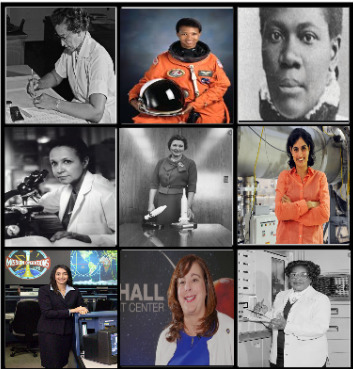
Non-Western women in STEM matter
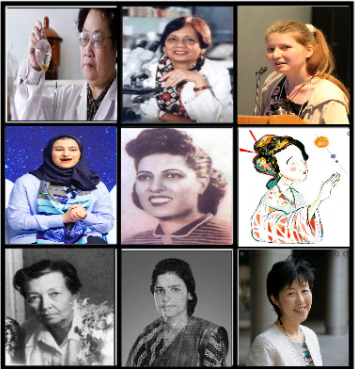
Immigrant women in STEM matter
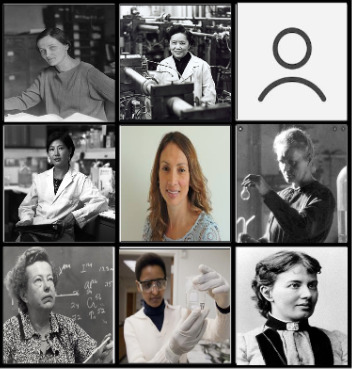
Jewish women in STEM matter
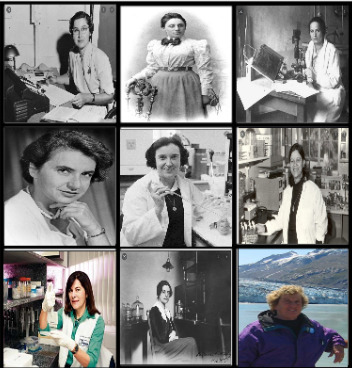
Disabled and chronically ill women in STEM matter
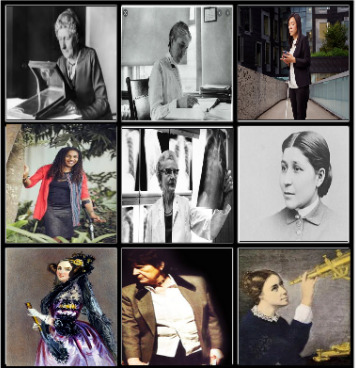
Lesbian and bisexual women in STEM matter
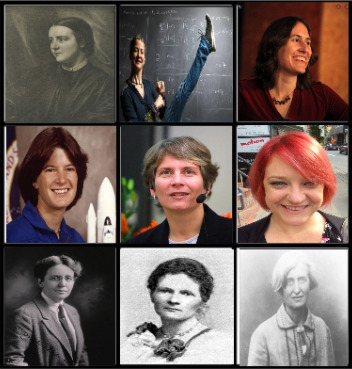
Trans women in STEM matter
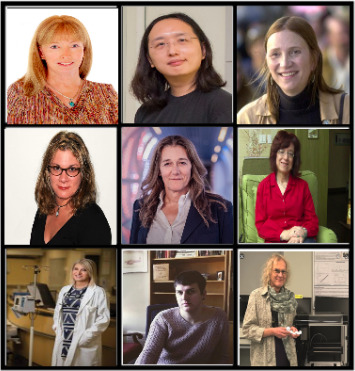
Women inventors matter
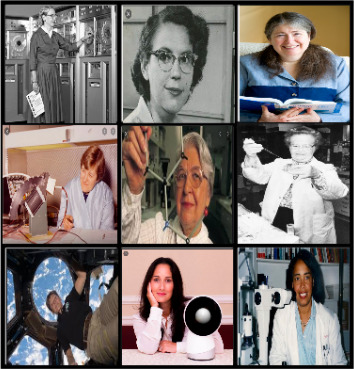
Women in STEM matter
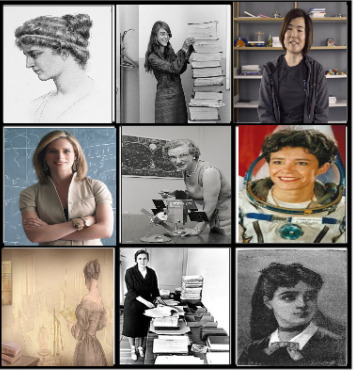
(yes, many of these women fit into multiple categories)
Women pictured; I encourage people to learn more about them:
Katherine Johnson: mathematician and human calculator who worked for NASA
Mae Jemison: doctor, engineer and first black woman astronaut
Rebecca Cole: doctor and social reformer
Jane Cooke Wright: cancer researcher
Mary Golda Ross: First native American woman engineer; worked for Lockheed skunk works and in rocketry
Nergis Mavalvala: Astrophysicist who participated in first gravitational wave detection
Ginger Kerrick: NASA physicist and flight director
Monserrate Román: NASA microbiologist who contributed to developing the ISS
Mary Jackson: NASA computer and engineer
Tu Youyou: medical researcher who discovered some malaria treatments
Indira Nath: immunologist; leprosy researcher
Alexandra Elbakyan: programmer who created Sci-hub
Sarah Al Amiri: computer scientist, former environmental minister and current head of UAE space program
Sameera Moussa: nuclear physicist; studied applications in medicine and energy
Wang Zhenyi: astronomer, mathematician, poet, polymath
Olga Tsuberbiller: mathematician; wrote standardized geometry textbook for USSR high schools
P. K. Thressia: India’s first woman chief engineer
Noriko Arai: roboticist
Cecilia Payne: astronomer; wrote important thesis about stellar atmospheres
Chien-Shiung Wu: nuclear physicist
Irma Goldberg: chemist
Flossie Wong-Staal: virologist who studied HIV
Alexandra Olaya-Castro: astrophysicist and quantum biophysicist
Marie Skłodowska Curie: discovered radioactivity
Maria Goeppert Mayer: theoretical nuclear physicist
Sossina Haile: chemist, invented solid acid fuel cells
Sofia Kovalevskaya: mathematician and writer
Vera Rubin: astronomer who discovered dark matter
Emmy Noether: mathematician who contributed to theory of relativity
Marietta Blau: physicist; studied cosmic rays
Rosalind Franklin: chemist; charcoal specialist; radiographer who discovered structure of DNA as well as several viruses
Rosalyn Yalow: medical physicist
Esther Lederberg: microbiologist; bacterial geneticist
Mayana Zatz: geneticist and genetic counselor
Stephanie Horovitz: chemist; proved that isotopes exist
Joan Feynman: space weather researcher
Annie Jump Cannon: astronomer; invented classification system for stars
Henrietta Swan Leavitt: astronomer; discovered Cepheid variable stars
Chieko Asakawa: computer scientist; develops accessibility technology
Farida Bedwei: software engineer
Helen Taussig: pediatric cardiology pioneer
Susan La Flesche: doctor, public health advocate, native American advocate
Ada King, countess of Lovelace: mathematician, writer; wrote first computer program
Joan Ball: invented first computer dating service
Caroline Hershel: astronomer; discovered several comets
Sophia Jex-Blake: doctor; fought for women in medicine
Marina Logares Jiménez: mathematician and LGBTQ+ activist
Katie Mack: astrophysicist and cosmologist
Sally Ride: astrophysicist and first American woman in space
Carolyn Bertozzi: chemist; bioorthogonal chemistry pioneer
Renée Hložek: cosmologist
Josephine Baker: doctor; radical public health advocate
Margaret Todd: doctor; coined the term isotope
Nina Vedeneyeva: physicist
Lynn Conway: computer scientist, inventor, engineer and transgender activist
Audrey Tang: software developer and technological minister
Joan Roughgarden: ecologist, evolutionary biologist, wrote about LGBTQ+ in nature
Rebecca Oppenheimer: astronomer
Martine Rothblatt: engineer, attorney, entrepreneur, biotechnologist, inventor
Robyn McCutcheon: astronomer, historian, engineer, foreign service worker (first to transition while abroad in foreign service)
Carys Massarella: doctor and transgender advocate
Autumn Kent: mathematician
Megan Povey: food physicist
Grace Hopper: computer scientist who invented COBOL, one of the first programming languages
Mary Sherman Morgan: rocket scientist; invented hydyne (type of rocket fuel)
Radia Perlman: computer programmer and network engineer who developed some internet protocols
Yvonne Brill: rocket scientist; invented hydrazine resistojet propulsion system
Stephanie Kwolek: chemist who invented Kevlar
Gertrude Elion: invented several medicines
Peggy Whitson: biochemist and astronaut
Cynthia Breazeal: roboticist and human-robot interaction researcher
Patricia Bath: ophthalmologist
Hypatia: astronomer, mathematician, philosopher and teacher at the Library of Alexandria
Margaret Hamilton: computer scientist; wrote program for Saturn V
Emma Haruka Iwao: computer scientist; holds record for calculating digits of pi
Lisa Randall: theoretical physicist
Nancy Roman: astronomer; NASA’s first chief of astronomy
Claudie André-Deshays Haigneré: doctor, politician and first French woman in space
Eunice Newton Foote: biologist, inventor, feminist; first person to realize that climate change is happening
Frances Kelsey: pharmacologist; prevented FDA from approving thalidomide
Sophie Germain: mathematician
#science#women in STEM#girl power#astronaut#katherine johnson#mae jemison#computer science#Astronomy#physics
8 notes
·
View notes
Quote
Stimuli-responsive biomaterials show great promise for modeling disease dynamics ex vivo with spatiotemporal control over the cellular microenvironment. However, harvesting cells from such materials for downstream analysis without perturbing their state remains an outstanding challenge in 3/4-dimensional (3D/4D) culture and tissue engineering. In this manuscript, a fully enzymatic strategy for hydrogel degradation that affords spatiotemporal control over cell release while maintaining cytocompatibility is introduced. Exploiting engineered variants of the sortase transpeptidase evolved to recognize and selectively cleave distinct peptide sequences largely absent from the mammalian proteome, many limitations implicit to state-of-the-art methods to liberate cells from gels are sidestepped. It is demonstrated that evolved sortase exposure has minimal impact on the global transcriptome of primary mammalian cells and that proteolytic cleavage proceeds with high specificity; incorporation of substrate sequences within hydrogel crosslinkers permits rapid and selective cell recovery with high viability. In composite multimaterial hydrogels, it is shown that sequential degradation of hydrogel layers enables highly specific retrieval of single-cell suspensions for phenotypic analysis. It is expected that the high bioorthogonality and substrate selectivity of the evolved sortases will lead to their broad adoption as an enzymatic material dissociation cue and that their multiplexed use will enable newfound studies in 4D cell culture.
User‐Controlled 4D Biomaterial Degradation with Substrate‐Selective Sortase Transpeptidases for Single‐Cell Biology - Bretherton - 2023 - Advanced Materials - Wiley Online Library
0 notes
Text
Bioorthogonal-Activated In Situ Vaccine Mediated by a COF-Based Catalytic Platform for Potent Cancer Immunotherapy
Personalized tumor vaccines have become a promising modality for cancer immunotherapy. However, in situ personalized tumor vaccines generated from immunogenic cancer cell death (ICD) and adjuvants are mired by toxic side effects and unsatisfactory efficiency. Herein, by functionalizing the reticular structure to optimize the catalytic activity of the materials, a series of biocompatible covalent organic framework (COF)-based catalysts have been designed and screened for establishing a... http://dlvr.it/SjvVXc
0 notes
Text
DBCO Click Chemistry
DBCO click chemistry is a process of applying surface functionalization to a compound in order to change its structure and properties. This process involves a variety of methods, including PEI-DBCO and Azide-alkyne click chemistry. DBCO is a highly effective chemical agent that can be used to form solids, liquids, and polymers.
PEI-DBCO
DBCO (dibenzocyclooctyne) PEG acid is a heterobifunctional reactive PEG derivative. Its fast kinetics make it suitable for Click Chemistry reactions without metal catalysts. The heterobifunctionality of DBCO PEG derivatives enables them to be used for spontaneous biomolecule labeling. They are also stable in aqueous buffers. Here, we report the use of this compound to label aCD44 antibodies on mesoporous silica nanoparticles (MSNPs).
For the labeling of aCD44, aCD44 peptide was conjugated onto the aCD44 antibody. This peptide was attached onto a PEI nanoparticle through copper-free click chemistry. In this process, the azide moiety is covalently linked to the PEI-MSNPs via NHS ester linker. The azide moiety gives the peptide a positive charge. The PEI nanoparticles were then characterized by atomic force microscopy (AFM), scanning electron microscopy (SEM) and zeta potential measurements.
The aCD44-PEI-MSNPs displayed a high internalization rate, which may account for the increased cytotoxicity. ACD44-PEI-MSNPs were more cytotoxic than PEI (25 kDa) and PEI-SS-CLs. The aCD44-PEI-MSNPs also showed a higher efficiency in gene transfection, while the PEI-SS-CLs were less cytotoxic.
Azide-alkyne click chemistry
During the past decade, copper catalyzed azide-alkyne click chemistry has become an increasingly popular reaction in the science community. This reaction provides a method for linking different types of peptides, antibodies, and drugs. This method can also be used to develop biomolecules that can be targeted in a complex chemical environment.
Click chemistry has gained popularity because it is a versatile and modular reaction, which is useful for a variety of applications. Click reactions are also quick, reliable, and selective. They can be used to target selected cellular organelles, such as mitochondria. They are also an effective tool for studying the biological effects of Pt-based anticancer drugs.
Click chemistry is also used for drug discovery and development. ABP Biosciences has developed fluorescent dyes for use in click chemistry. They also have developed a biotin that is CLICKable.
Azide-alkyne click chemistry is classified into two main categories, the Cu(I)-catalyzed reaction and the strain-promoted azide-alkyne click (SPAAC) reaction. In SPAAC, the cycloalkyne precursor is oxidized by a reagent such as a gem-fluorine to release its ring strain, thereby increasing the reaction driving force. This enables the high fidelity ligation of alkynes with azides in a variety of chemical environments. The SPAAC reaction also allows for high efficiency ligation without the use of a catalyst.
Surface functionalization
DBCO click chemistry is a novel bio-conjugation strategy. This strategy provides a simple way to conjugate molecules such as enzymes and antibodies to surfaces of nanoparticles. These molecules can be used as signal probes for imaging and biosensing applications. Click chemistry also provides a flexible framework for controlling the conjugation process. It can also improve the analytical performance of nanosensors used in bio-analysis.
DBCO compounds react with azide functionalized compounds without the need of a Cu(I) catalyst. The resulting triazole linkage provides a stable connection between azide groups and azide ligands. This reaction was first identified in 1953 by Blomquist and Liu. Later, Wittig and Krebs confirmed the reaction in 1961.
Bioorthogonal click chemistry has been used to conjugate recognition elements to SMNPs. Using this strategy, researchers have developed QDs as multiple signal probes. These QDs are able to detect individual virus particles. They can also be used to detect circulating tumor cells.
Bioorthogonal click chemistries have made it possible to detect multiple biomarkers in a single sample. In addition, their combination with lateral flow devices can reduce the cost of nanosensors and shorten the analysis time.
oYo-Link DBCO
oYo-Link is a site-specific protein labeling solution that is activated by non-damaging black light. This product is designed to eliminate the shortcomings of conventional protein labeling techniques. Instead of requiring sample concentration and centrifugation, oYo-Link enables you to label just a single ug of antibody at a time, resulting in a high affinity and 100% sample recovery.
oYo-Link can be used in buffers, and is compatible with Tris, BSA, and BSA-Tris buffers. When illuminated by the non-damaging black light, the oYo-Link reagent forms a covalent bond with the antibody. This bond forms in just two hours, and is ready for storage. Once the reaction is complete, the antibody will be labeled with the desired label. It is also a copper-free click chemistry solution. It can be used with azide-tagged molecules, and it can be run in aqueous and organic solvents.
AlphaThera's oYo-Link Conjugation Technology can be used to label the Fc region of an antibody using click chemistry or enzymes. It can also be used to label an antibody with oligonucleotides or biotin.
0 notes
Link
0 notes
Text
[ad_1] Sign up for CNN’s Wonder Theory science publication. Explore the universe with news on fascinating discoveries, scientific advancements and more. CNN — The Nobel Prize in chemistry was awarded Wednesday for work that led to “an ingenious tool for building molecules.” Carolyn R. Bertozzi, Morten Meldal and Ok. Barry Sharpless grew to become Nobel laureates for founding and advancing the fields of click on chemistry and bioorthogonal chemistry, which has “led to a revolution in how chemists think about linking molecules together,” the Royal Swedish Academy of Sciences mentioned. Click chemistry permits quick and simple reactions, the place “molecular building blocks snap together quickly,” the committee mentioned. The precept can convey real-world advantages within the growth of prescription drugs and drugs, together with extra focused most cancers therapies. Sharpless and Meldal pioneered the idea earlier than Bertozzi “took click chemistry to a new level,” the organizers mentioned, by growing click on reactions that work inside dwelling organisms (or bioorthogonal reactions). Click chemistry brings two molecules collectively “almost like a couple of pieces of Lego,” American Chemical Society President Angela Wilson instructed CNN on Wednesday. “Bertozzi was responsible for doing click chemistry within the human body, which is absolutely remarkable,” Wilson mentioned. “The three together have opened up new doors for us in what we can do, from pharmaceutical chemistry to materials chemistry,” and their work is already being utilized in manufacturing, she added. Bertozzi instructed reporters on the winners’ press convention over the cellphone that her developments are getting used “to discover new kinds of molecules we didn’t know existed,” and means scientists are “doing chemistry inside human patients to make the drugs go to the right place.” The Stanford University professor mentioned she was instructed of her win in the course of the evening on the American west coast. “I can hardly breathe,” she mentioned of her response. “I’m still not entirely positive it’s real.” Sharpless, a professor of chemistry at Scripps Research in La Jolla, California, in the meantime, grew to become the fifth particular person ever to win two Nobels, becoming a member of a brief record that features pioneering chemists Marie Curie and Frederick Sanger. Sharpless got here up with the idea for click on chemistry in 2001, the identical 12 months he received his first Nobel prize for chemistry. Working independently, Sharpless and Meldal, who is predicated on the University of Copenhagen in Denmark, got here up with what the Nobel committee described because the “brilliant reaction” synonymous with click on chemistry, which entails a catalyzed response between azides and alkynes. “If chemists want to link two different molecules they can now, relatively easily, introduce an azide in one molecule and an alkyne in the other. They then snap the molecules together with the help of some copper ions,” the Nobel committee mentioned in a doc explaining why that they had awarded the prize. “It’s used to modify materials, for instance if you want them to conduct electricity or collect light or modify surfaces to become antibacterial,” defined Johan Elf, a member of The Royal Swedish Academy of Sciences and a part of the committee that determined the respect. Bertozzi developed click on reactions that can be utilized inside dwelling organisms – as a result of they don’t contain copper ions that are poisonous. She centered on glycans – advanced carbohydrates which can be constructed from varied forms of sugar and infrequently sit on the floor of proteins and cells. They play an essential function
in lots of organic processes, reminiscent of when viruses infect cells or when the immune system is activated, the Nobel committee defined. Just in! First selfie from our 2022 #NobelPrize laureate in chemistry @CarolynBertozzi. Congratulations! pic.twitter.com/kuremcRIaN— The Nobel Prize (@NobelPrize) October 5, 2022 Her bioorthogonal reactions – which happen with out disturbing the traditional chemistry of the cell – are used globally to map how cells operate. Some researchers at the moment are investigating how these reactions can be utilized to diagnose and deal with most cancers. “Potentially, you can direct a radioactive marker to cancer cells and you can potentially deliver a toxic or radioactive compound to kill the cancer cell. It’s also used to direct enzymes to cancer cells that remove the carbohydrate layer so the cancer cell can be seen by the immune system,” Elf instructed CNN. The Nobels are being awarded all through the week; the prizes for drugs and physics had been introduced on Monday and Tuesday. Bertozzi is the one feminine scientist to have been awarded a science Nobel prize this 12 months, after an all-male line-up in 2021. The three winners will share prize cash value $915,000 (10 million Swedish krona). [ad_2] Source link
0 notes
Text
Three Scientists Win Nobel Prize in Chemistry for Putting Molecules Together to Design Drugs | world news
Three Scientists Win Nobel Prize in Chemistry for Putting Molecules Together to Design Drugs | world news
The Nobel Prize in Chemistry was awarded to three scientists who developed a method of “sticking molecules together” to create new drugs. “Click chemistry” or bioorthogonal reactions can be used to create new anticancer drugs and map DNA. It is the work of US scientists Carolyn R. Bertozzi and K. Barry Sharpless and Morten Meldal of Denmark. Mr. Sharpless of Scripps Research in California won the…

View On WordPress
1 note
·
View note

